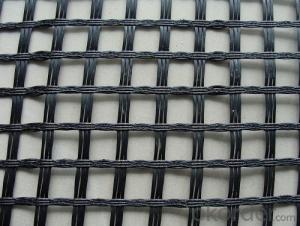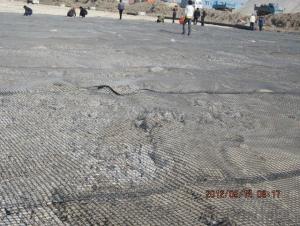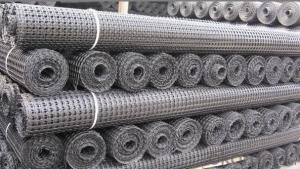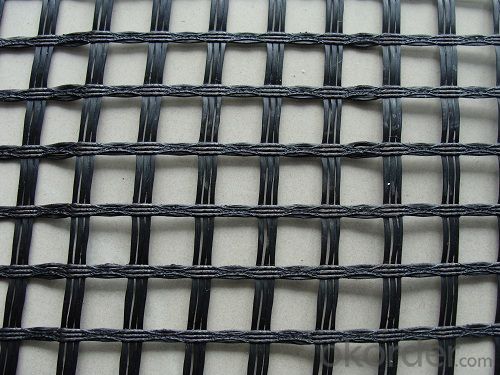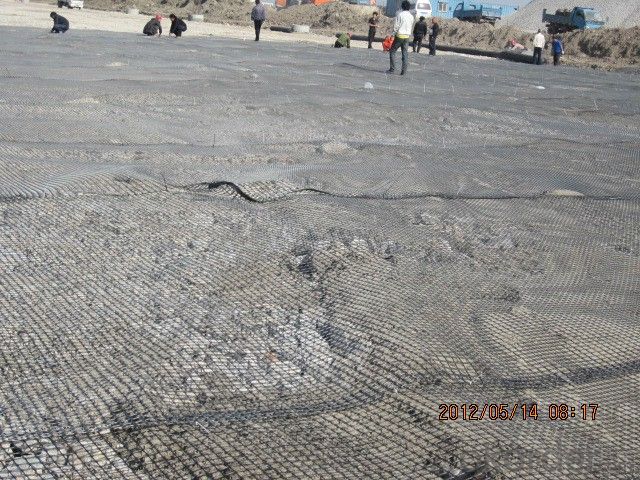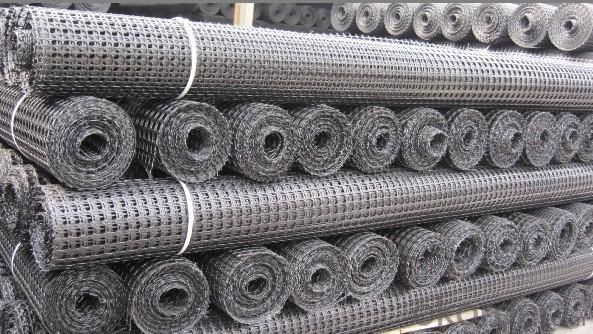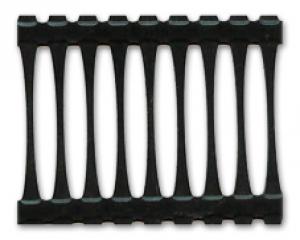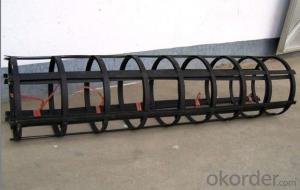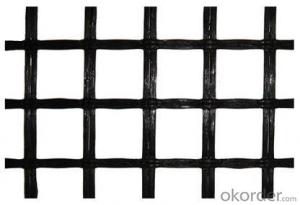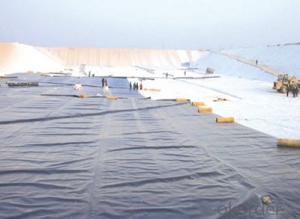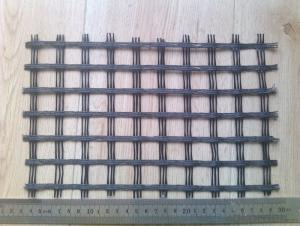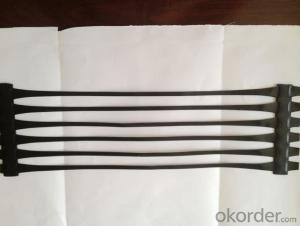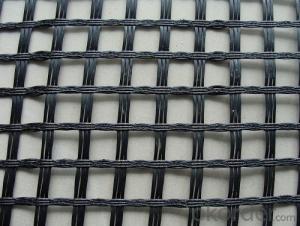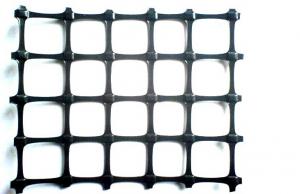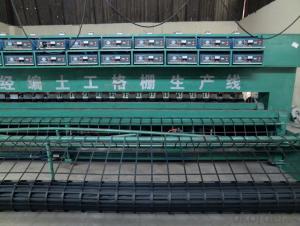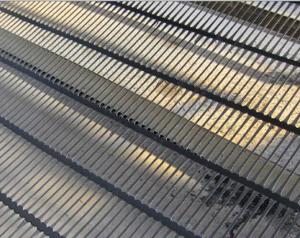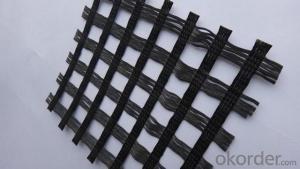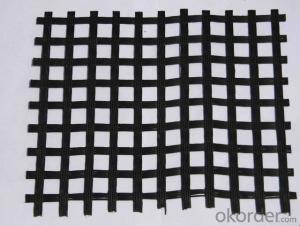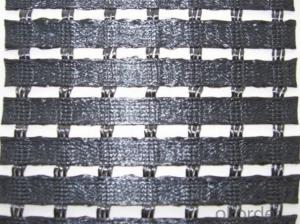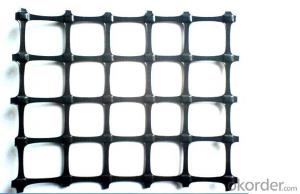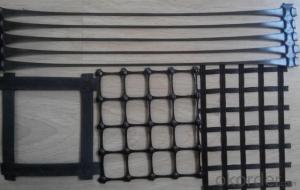HDPE Biaxial Geogrid for Construction Usage - Geogrids Noise Reduction
- Loading Port:
- Qingdao
- Payment Terms:
- TT or LC
- Min Order Qty:
- 10 roll
- Supply Capability:
- 5000 roll/month
OKorder Service Pledge
OKorder Financial Service
You Might Also Like
HDPE Biaxial Geogrid
Quick Details
Type: Geogrids
Place of Origin: Shandong, China (Mainland)
Material: Plastic-Steel,HDPE/PP
Model Number: TGDG
color: black etc.
length: 50-100m(or at request)
sample: available
Packaging & Delivery
Standard exporting package , or as request |
within 10 days after the advanced payment |
Specifications
HDPE biaxial geogrid
1.Tensile strength: 15~100KN/M
2.Color:black etc.
3.Material:PP/PE
4.Certifictaion:CE/ISO9001,14001
HDPE biaxial geogrid :
Picture
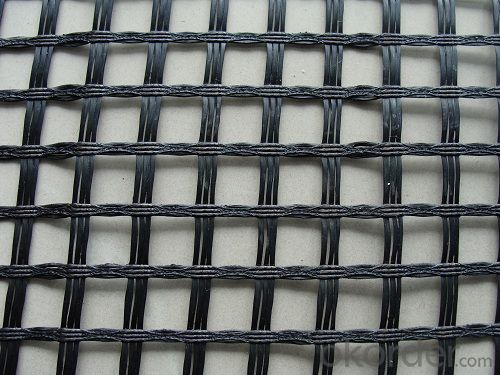
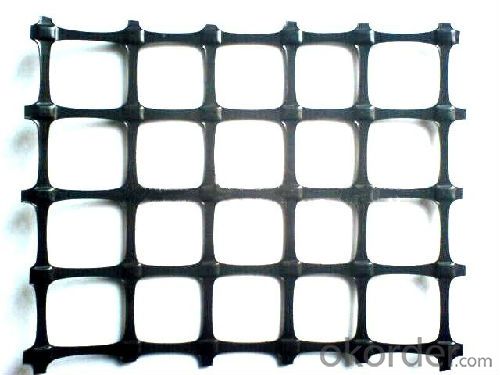
- Q: How do geogrids enhance the stability of steep highway embankments?
- Geogrids enhance the stability of steep highway embankments by providing reinforcement and confinement to the soil. These grid-like structures are installed within the embankment, creating a stable platform that distributes the load more evenly. This prevents soil erosion, slope failures, and lateral movement, ultimately increasing the overall stability and safety of the embankment.
- Q: Can geogrids be used in ground improvement techniques?
- Yes, geogrids can be used in ground improvement techniques. Geogrids are commonly used in various ground improvement methods such as soil reinforcement, stabilization, and erosion control. They are effective in enhancing the strength and stability of weak soils, providing increased load-bearing capacity, reducing settlement, and preventing soil erosion. Geogrids can be installed horizontally or vertically depending on the specific ground improvement requirements.
- Q: Can geogrids be used in embankment stabilization?
- Yes, geogrids can be used in embankment stabilization. Geogrids are commonly used in civil engineering applications to provide reinforcement and stability to soil structures, including embankments. They help to distribute loads more evenly, reduce soil movement, and increase overall stability.
- Q: What are the different materials used to manufacture geogrids?
- Geogrids are commonly manufactured using materials such as polyester, polypropylene, fiberglass, and steel.
- Q: What are the factors that affect the long-term creep behavior of geogrids?
- The factors that affect the long-term creep behavior of geogrids include the type and quality of the material used in the geogrid, the load applied to the geogrid, the environmental conditions in which the geogrid is placed, and the duration of the load application. Additionally, factors such as installation technique, strain rate, and the presence of moisture can also influence the long-term creep behavior of geogrids.
- Q: Can geogrids be used for reinforcement in railway tracks?
- Yes, geogrids can be used for reinforcement in railway tracks. Geogrids are a type of geosynthetic material that can provide additional strength and stability to the track structure. They can help distribute loads, prevent track settlement, and improve overall track performance.
- Q: How do geogrids help in reducing the use of natural resources?
- Geogrids help in reducing the use of natural resources by reinforcing and stabilizing soil, thereby minimizing the need for excessive excavation and the use of additional materials such as stone or concrete. This reduces the demand for natural resources like aggregates, sand, and gravel, leading to a more sustainable and eco-friendly construction process.
- Q: What are the design guidelines for geogrid-reinforced retaining walls?
- Design guidelines for geogrid-reinforced retaining walls include considering factors such as soil properties, wall height and slope, geogrid type and spacing, construction methods, and drainage. The design should ensure proper stability, prevent excessive deformation, and provide adequate drainage to withstand lateral earth pressures. It is crucial to follow industry standards and guidelines, conduct thorough site investigations, and consult with experienced engineers to ensure a safe and efficient design.
- Q: What are the factors affecting the durability of geogrids?
- The factors affecting the durability of geogrids include the material composition of the geogrid, the quality of the manufacturing process, exposure to UV radiation, chemical exposure, temperature fluctuations, installation techniques, and the level of stress or load placed on the geogrid.
- Q: Are geogrids suitable for reinforcement of mechanically stabilized earth retaining walls?
- Yes, geogrids are suitable for the reinforcement of mechanically stabilized earth retaining walls. Geogrids are specifically designed to provide strength and stability to soil structures, and they effectively distribute and transfer loads within the soil mass. By adding geogrids to a mechanically stabilized earth retaining wall, the overall structural integrity and resistance to lateral forces can be significantly enhanced, making them a reliable and effective solution for reinforcement.
Send your message to us
HDPE Biaxial Geogrid for Construction Usage - Geogrids Noise Reduction
- Loading Port:
- Qingdao
- Payment Terms:
- TT or LC
- Min Order Qty:
- 10 roll
- Supply Capability:
- 5000 roll/month
OKorder Service Pledge
OKorder Financial Service
Similar products
Hot products
Hot Searches
Related keywords
